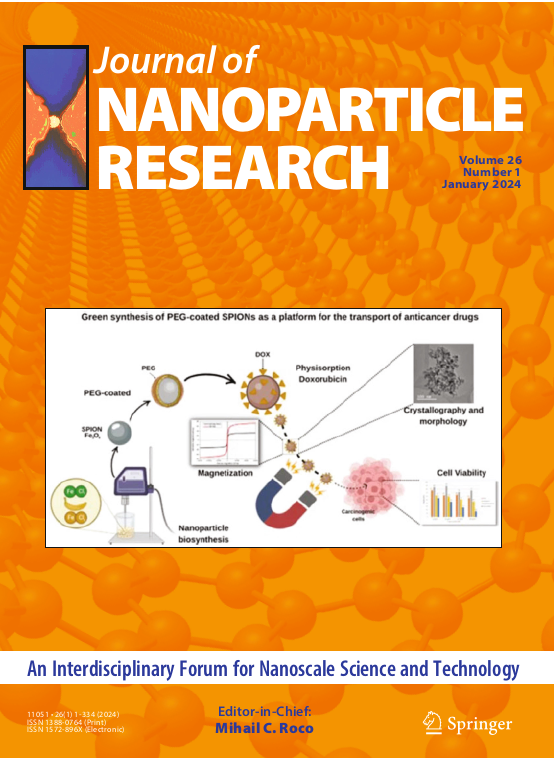Construction of pH-mutation responsive NIR-II fluorophore for imaging of tumor cells
IF 2.6
4区 材料科学
Q3 CHEMISTRY, MULTIDISCIPLINARY
引用次数: 0
Abstract
The pH-responsive second near infrared window (NIR-II) probes, used at the subcellular range, are unfrequent. Here, we designed and synthesized the NIR-II fluorescence probes ETN and mPE-NPS with significant pH response property and unique fluorescence mutation range (pH 4.5–5.0). It was worth noting that the mPE-NPS probe exhibited favorable biocompatibility and excellent NIR-II tumor cellular imaging capability, which is expected to be used for specific NIR-II fluorescence imaging of subcellular structures.
Graphical abstract
肿瘤细胞ph突变应答型NIR-II荧光团的构建
ph响应第二近红外窗口(NIR-II)探针,用于亚细胞范围,是不常见的。本文设计合成了具有显著pH响应特性和独特荧光突变范围(pH 4.5-5.0)的NIR-II荧光探针ETN和mPE-NPS。值得注意的是,mPE-NPS探针具有良好的生物相容性和优异的NIR-II肿瘤细胞成像能力,有望用于特异的NIR-II亚细胞结构荧光成像。图形抽象
本文章由计算机程序翻译,如有差异,请以英文原文为准。
求助全文
约1分钟内获得全文
求助全文
来源期刊

Journal of Nanoparticle Research
工程技术-材料科学:综合
CiteScore
4.40
自引率
4.00%
发文量
198
审稿时长
3.9 months
期刊介绍:
The objective of the Journal of Nanoparticle Research is to disseminate knowledge of the physical, chemical and biological phenomena and processes in structures that have at least one lengthscale ranging from molecular to approximately 100 nm (or submicron in some situations), and exhibit improved and novel properties that are a direct result of their small size.
Nanoparticle research is a key component of nanoscience, nanoengineering and nanotechnology.
The focus of the Journal is on the specific concepts, properties, phenomena, and processes related to particles, tubes, layers, macromolecules, clusters and other finite structures of the nanoscale size range. Synthesis, assembly, transport, reactivity, and stability of such structures are considered. Development of in-situ and ex-situ instrumentation for characterization of nanoparticles and their interfaces should be based on new principles for probing properties and phenomena not well understood at the nanometer scale. Modeling and simulation may include atom-based quantum mechanics; molecular dynamics; single-particle, multi-body and continuum based models; fractals; other methods suitable for modeling particle synthesis, assembling and interaction processes. Realization and application of systems, structures and devices with novel functions obtained via precursor nanoparticles is emphasized. Approaches may include gas-, liquid-, solid-, and vacuum-based processes, size reduction, chemical- and bio-self assembly. Contributions include utilization of nanoparticle systems for enhancing a phenomenon or process and particle assembling into hierarchical structures, as well as formulation and the administration of drugs. Synergistic approaches originating from different disciplines and technologies, and interaction between the research providers and users in this field, are encouraged.
 求助内容:
求助内容: 应助结果提醒方式:
应助结果提醒方式:


